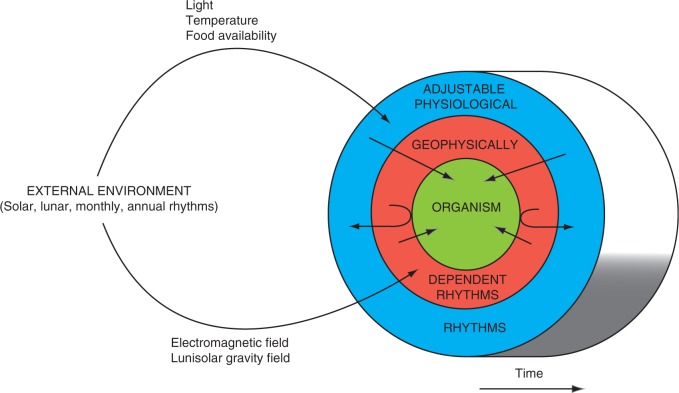Fig. 1.
Interplay of exogenous and endogenous timing mechanisms upon an organism. Rhythmic physico-chemical features of the external environment that are components of the biotic complex (light, temperature, food) can be intercepted by plants by means of specific receptors which transduce and integrate the biophysical properties into the network of metabolism. The rhythmic nature of these features then becomes translated into physiological rhythms (outer ring of the diagram) that can be adjusted in accordance with the capture and summation of the relevant inflow of physico-chemical units. The inner ring of the diagram represents a second class of external environmental variables that are components of the Earth’s geophysical fields. These fields cannot be altered and may not show predictable long-term rhythms and therefore there may be no specific receptor designated for their transduction. The response to them is direct, according to physical principles, even if these are presently not fully understood. The adjustable physiological rhythms and the more rigorous geophysically dependent rhythms both feed into (arrows) and participate in the living processes and behaviour of the organism, represented by the circular ‘core’ of the diagram. It is possible, however, that should a geophysical rhythm extend from one day to the next, its consequences, which may be mediated by the organism itself, might then be briefly integrated as an adjustable physiological rhythm (J-shaped arrows). However, given the variable, or arrhythmic nature of geophysical in-flows, integration is short-lived and supplanted by the in-flow of novel information. The figure is based on fig. 2 in Brown (1964), but with much modification.

